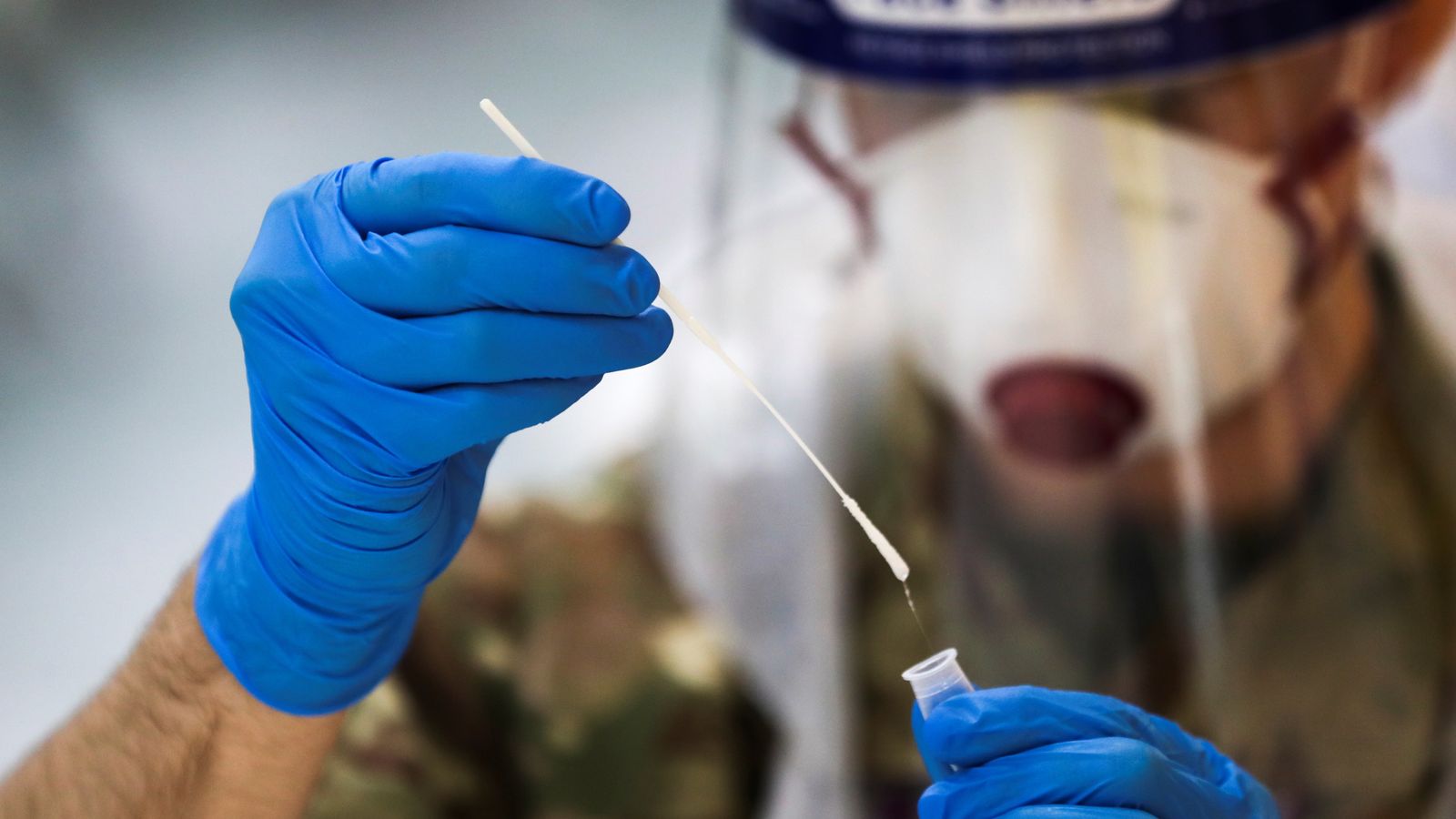The second Omicron COVID-19 surge looks to have peaked already, data suggests.
The sharp rise in infections since the second half of February, driven by the BA.2 version of Omicron and the relaxation of restrictions, has been slowing for several days.
And the UK Health Security Agency now says case rates in England “remained stable” in the week to March 27th.
The hopeful news comes on the last day of free lateral flow tests in England, which will dramatically reduce the ability to track the virus.
The news comes after bereaved families marched on Downing Street to demand that the National COVID Memorial Wall by the River Thames in London be kept for good.
According to the Weekly Flu and COVID-19 surveillance report, cases are already falling in the south-west of England, and nationally in children aged between 5 and 9.
However, rates are still rising slowly in other age groups and more steadily in the north-east of England.
COVID-19: Scotland to phase out coronavirus face mask laws in April
COVID-19: How can I get lateral flow tests from Friday and how much do they cost?
COVID: Bereaved families call for coronavirus memorial wall to be made permanent
The daily data on the COVID dashboard is also promising.
It shows case rates in Scotland are down on their peak and have levelled off elsewhere in the UK.
The dashboard is no longer a reliable measure of the size of the UK epidemic because the number of people testing and reporting their results has dropped sharply since Plan B was lifted.
But even with fewer people testing it can still show trends.
Or at least it has done until now.
Read more: How can I get lateral flow tests from Friday and how much do they cost?
The lights will dim on the dashboard when testing stops in England. Free lateral flows are available for a couple more weeks in Scotland and into the summer in Wales and Northern Ireland.
Dashboard data on hospital admissions and deaths will still be useful measures of the UK situation.
But the only insight to infection rates will come from the weekly report from the Office for National Statistics. It runs its own testing programme of more than 100,000 randomly selected people.
Although it provides an accurate snapshot of what the virus is up to – because people are tested whether or not they have symptoms – there is a significant lag in the data.
Seesaw between population immunity and a highly infectious virus
The ONS looks at prevalence – how many people have COVID – in any one week.
It’s not just a count of newly acquired infections; it includes people infected a week or two earlier and are still testing positive.
So don’t be surprised if the ONS data continues to show a rise in infections for another couple of weeks before falling.
If the UK follows the pattern of the BA.2 surge in Denmark and the Netherlands, there will be a steep drop in cases.
What we are seeing at the moment is a seesaw between population immunity and a highly infectious virus.
For the last few weeks the virus has had the edge because there have been enough people vulnerable to infection to sustain its spread.
But high infection rates – more than 4 million had COVID in last week’s count by the ONS – rapidly increase immunity across the population, topping up the barrier from the booster jab.
The combined effect of the vaccine and natural immunity slow the virus down again and cases fall.
Sadly it won’t be the last we see of COVID, however, as vaccine immunity is waning in all age groups.
Another booster for over-75s
Those over 75 are being asked to have another booster to raise their protection against serious disease.
But younger people will become more vulnerable to infection as time goes on – so the seesaw will tip in the virus’ favour once again.
It’s impossible to predict with certainty when the next surge will be. But the government has signalled an autumn booster campaign and the vaccine manufacturers are testing Omicron-specific jabs, a pretty good clue of what’s to come.






